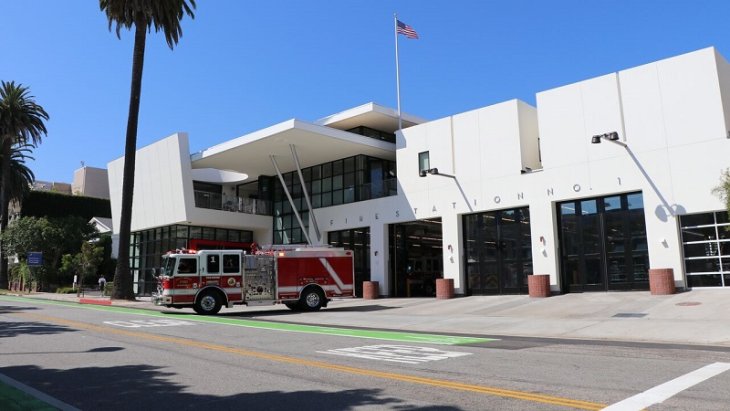Two storms were forecast on Sunday to bring more rain — and the potential for mud and debris flows — to Southern California this week, but they aren’t expected to be as strong as the one that drenched the region on Thursday and Friday.
The first of two cold fronts was due to move in from the west on Monday, bringing mostly cloudy skies throughout the day and rain at night, National Weather Service Meteorologist Joe Sirard said.
Up to 1/4 of an inch of rain per hour was expected in some areas, with the heaviest precipitation forecast to last a few hours before tapering to showers by Tuesday morning, Sirard said.
On Tuesday night, a second, slightly more robust cold front was forecast to arrive, again bringing about 1/4 of an inch of rain per hour, according to Sirard.
Flash flood watches weren’t anticipated, but the weather service was closely monitoring the storms and their potential for causing mud and debris flows in recent burn areas, he said, adding that the chance of higher rainfall amounts from thunderstorms Tuesday afternoon into Wednesday, and to a lesser extent on Monday, raises concerns.
“The burn areas are already wet … so it won’t take whole lot of rain to cause debris flows,” Sirard said. “As little as 2/10 of an inch in 15 minutes would be enough to cause concern. A thunderstorm above the burn areas could be enough to cause mud and debris flows.”
Each storm was expected to bring up to 2/3 of an inch of rain, or between 1 1/2 and 2 inches in total, he said.
The storms were good news for mountain resorts as significant snowfall was possible above 5,500 feet Tuesday night into Wednesday, Sirard said.
Mountain High opened Sunday after getting 8 inches of snow from last week’s storm and was looking to add to its base with more natural and blown snow.
Sirard said 2 to 4 inches of snow was possible above 6,000 feet on Monday and up to 8 inches Tuesday night into Wednesday, with potentially higher amounts at higher elevations.
Snow levels were expected to drop to 5,500 feet on Tuesday, to 5,000 feet by Tuesday night and they could be even lower in some areas, according to the NWS.
High temperatures through Wednesday were forecast to range from the high 50s to lower 60s along the coast, cooler in some valley areas. Highs in the mountains were expected to be in the mid-40s to around 50 at lower elevations and in the mid-30s to low 40s at higher levels. Lows in the 40s were forecast for the coast and valleys and in the 20s and 30s in the mountains, Sirard said.
The NWS advised motorists to expect winter driving conditions at elevations above 5,000 feet and slick roadways with ponding of water on roads and in low-lying areas.
Sirard said there may be some lingering rain and mountain snow showers Wednesday night, but Thursday and most of Friday were expected to be dry.
A slight chance of rain was in the forecast for Friday night into Saturday with the possible arrival of a weak storm system, he said.




















